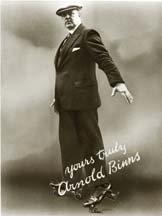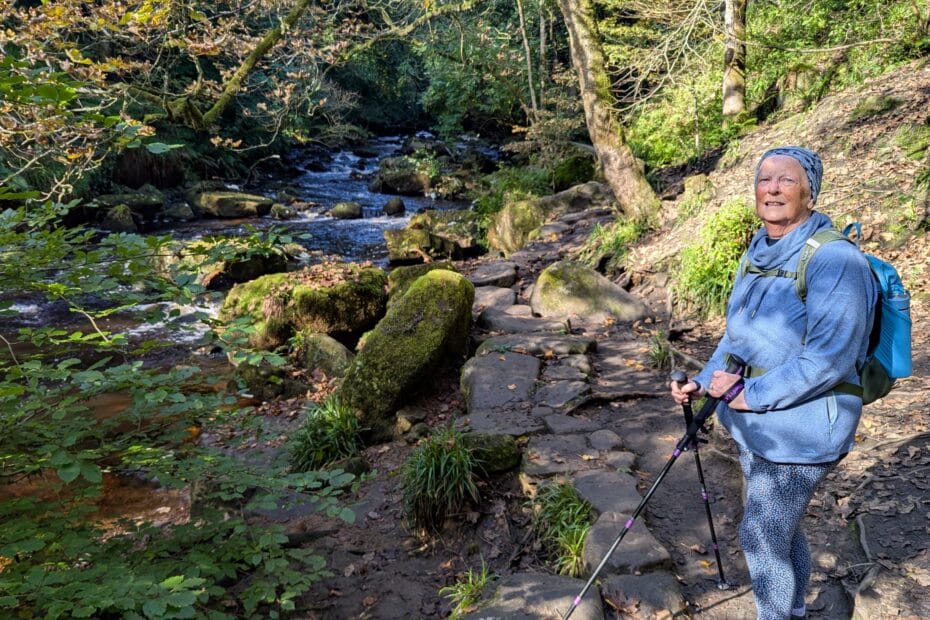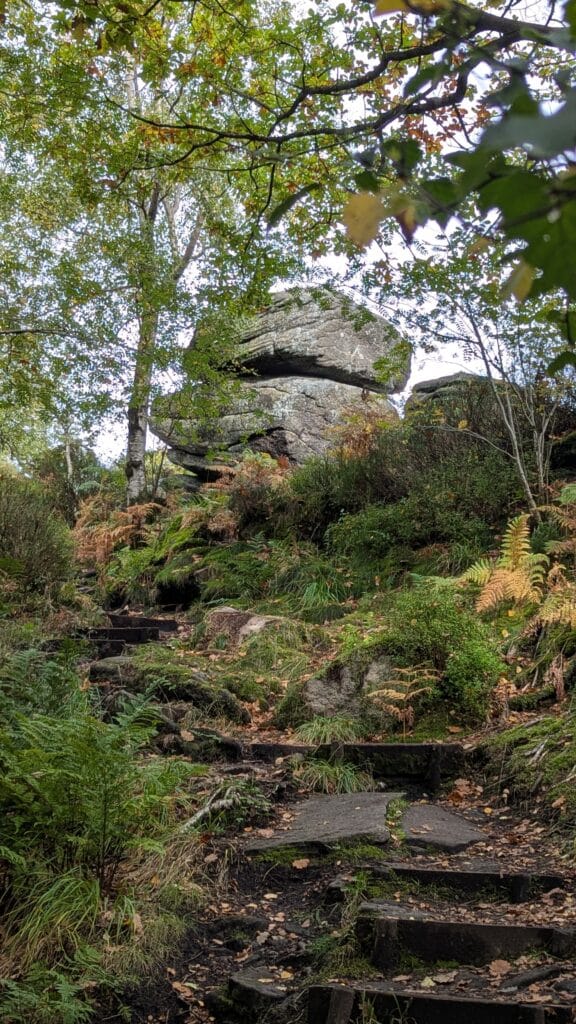
Early this week we ventured out from Lytham for a scenic escape into the heart of West Yorkshire’s countryside to Hardcastle Crags. After an easy 80-minute drive, we arrived at Lower Midgehole Car Park, ready to stretch our legs and soak in the early signs of autumn.
First problem, it’s in Yorkshire, but we managed the border controls alright. (For the benefit of foreigners, that’s a joke. There are no border controls. Lancashire and Yorkshire are two administrative areas and we all love eachother really.)
Hardcastle Crags is close to Hebden Bridge famed for its picturesque, historic character, vibrant arts scene, and well-preserved Victorian architecture. It is often called the ” laid-back” town of West Yorkshire, known for its bohemian atmosphere, independent shops, cafes, and galleries.
The countryside in this part of West Yorkshire is also stunning. The valley of the Hebden Water river, which contains Hardcastle Crags, is beautifully wooded at the Hebden Bridge End and extends up on to the moors and into Bronte country. The Calder Valley, which contains Hebden Bridge, is equally picturesque. The whole area is definitely worth a visit.
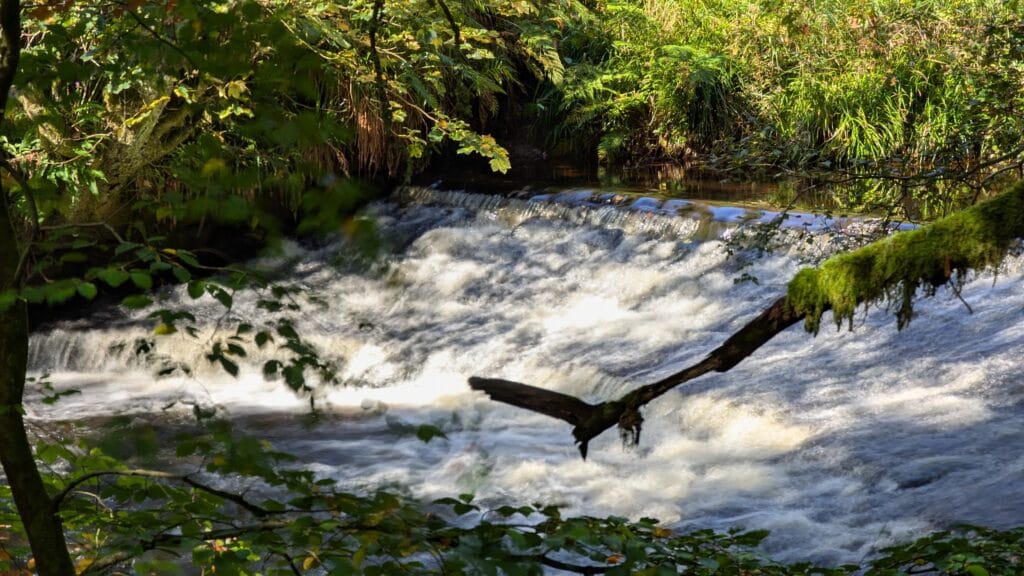
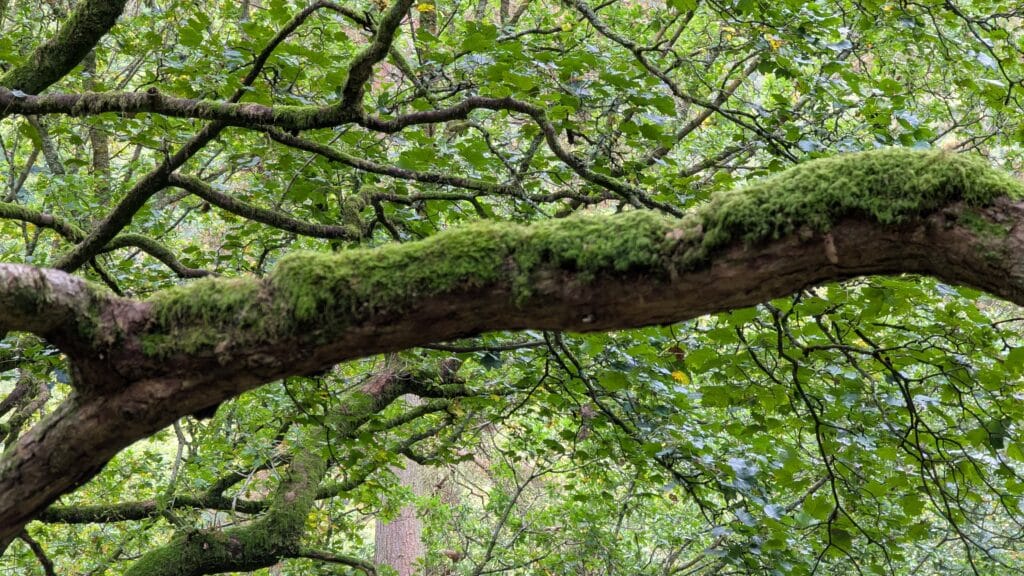
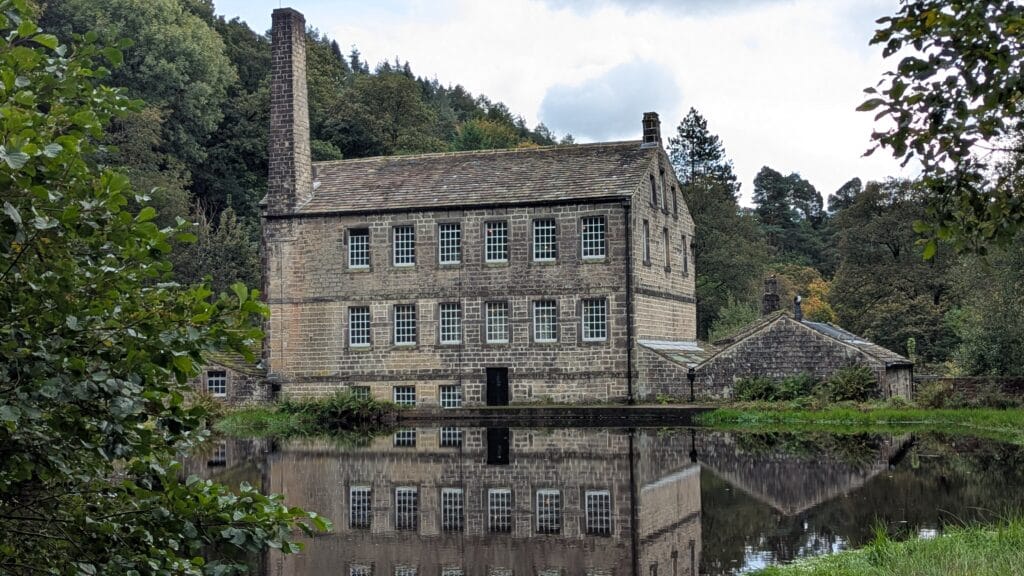
The first part of the walk, to Gibson Mill, follows the river upstream through Hebden Dale. Though the path is a little rough in places, it’s undeniably beautiful. Towering trees line the route, their leaves just beginning to turn, hinting at the vibrant colours to come. The river, rushing through the valley, adds a soothing soundtrack to the journey—nature’s own meditation.
Gibson Mill itself is a fascinating stop. Nestled in the woods, this historic building now serves as a museum, educational centre, and café. Its past is full of surprises. Having produced cloth until 1890, it then became an ‘entertainment emporium’ with a dance hall and a skating rink. After the First World War, none other than world champion Arnold Binns gave lessons. In 1930 at the age of 47 he skated for 40 hours non-stop, breaking his own world record, and then reputedly skated from Land’s End to John O’Groats. It’s hard to imagine such lively scenes in such a peaceful setting, but that’s part of the charm.
From the mill, we continued along the estate road deeper into the valley, eventually branching off to admire the crags—rugged and dramatic against the soft woodland backdrop. The crags are millstone grit from the Carbonferous Period. While these rocks were used as millstones, their tendency to leave particles of grit in the milled flour meant that other rocks were found to complete this task, thus improving the dental health of the nation, but perhaps damaging the earning potential of early dentists. After millstone grit, the most prized rock for grinding flour was French Burr stone. This exceptionally hard and durable quartz-rich stone was quarried near Paris and became the gold standard for millstones in the 18th and 19th centuries.
We returned to the car park via the same estate road, feeling refreshed and quietly exhilarated by the landscape.
If you’re looking for a walk that combines natural beauty, historical intrigue, and a touch of adventure, this one’s a gem. And with autumn just around the corner, now’s the perfect time to go.
